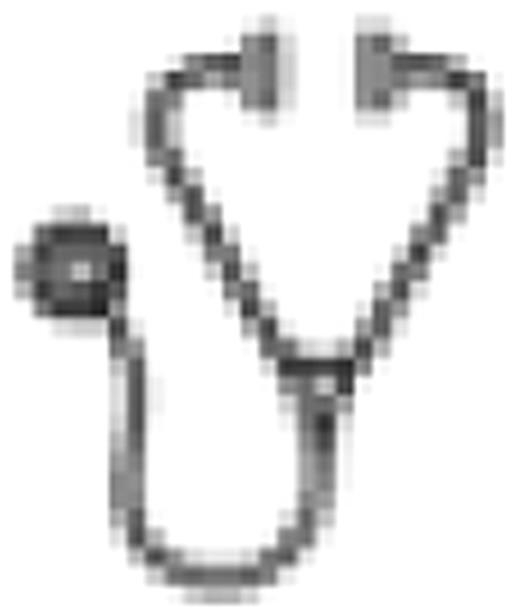Abstract
Abstract 698
Between 11/2007 and 01/2009, the FCGCLL/MW and the GOELAMS conducted a multicenter phase III trial, CLL2007FMP, to evaluate the efficacy of FCCam versus FCR in previously untreated medically fit patients. PFS was the primary-end-point of this trial. The trial was discontinued after randomisation of 165 patients for unacceptable toxicity in the FCCam arm. PFS and OS are not yet evaluable but as a sensitive 6 color flow cytometry technique was used to assess MRD in blood and bone marrow at month 9, we were able to evaluate the quality of the response in both arms.
A cohort of 178 medically fit patients (cumulative illness rating scale (CIRS) score < or = 6 and creatinine clearance ≥ 60 ml/min), younger than 65 years old, were enrolled. 165 patients were randomized to receive six oral courses of FC (F 40mg/m2 d1-3 and C 250 mg/m2 d1–3; q 28 days) in combination with either R (n=83; 375 mg/m2 i.v. d 0 at first cycle and 500 mg/m2 d1 all subsequent cycles; q 28 days) or Cam (n=82; 30 mg s/c d1-3; q 28 days). Patients were stratified according to IGHV mutational status and presence of 11q deletion. Cases with 17p deletion were excluded. The trial recruitment was discontinued because of an excess of mortality in the FCCam arm (6 deaths versus 0 in FCR arm), and the last 13 patients enrolled were not randomized. Clinical response was evaluated based on IWCLL criteria.
We established a sensitive and specific approach for the evaluation of minimal residual disease (MRD) at month 9, using a 6-color flow cytometry technique with 3 combinations including characteristic markers and light chain expression. We determined the limit of detection (LOD) of the assay by studying normal blood samples, LOD varied from 0.5 to 0.7×10-5 depending on the combination considered.
The Overall Response Rate (ORR) was 91% in the FCR arm and 85% in the FCCam arm (ns). Clinical responses were as follows: CR (FCR: 56/80=70%, FCCam: 45/79 =59%, ns), CR I (FCR:13/FCCam: 11), PR (FCR:5/FCCam:15), and stable and progressive cases (FCR: 6/FCCam:8). When considering together CR and CR I, response rate appeared significantly higher in the FCR arm (86%) than in FCCam arm (70%) (p=0.03). MRD was assessed both in blood and bone marrow at month 9, and was undetectable in 58% patients in blood and only in 36 % in bone marrow. No patient had an undetectable MRD in marrow when detectable in blood. Similarly, MRD was detectable in bone marrow in 15 cases with histologically normal bone marrow biopsy, whereas no nodal PR had undetectable MRD. Therefore, flow cytometry MRD in bone marrow appears as the most sensitive technique for the evaluation of response. Of note, 9 patients had a very good PR with presence of a residual lymphnode, and had undetectable blood and bone marrow MRD (4 in FCCAm arm and 5 in FCR arm). When considering MRD independently from clinical response, the number of MRD negative cases was not significantly different between the two arms (FCR: 45%/FCCam: 26 %) arm. But when combining MRD negativity with clinical complete response, the number of MRD negative CR was significantly higher with FCR (40%) than with FCCam (15%)(p= 0.029). The number of courses of chemotherapy received was slightly but significantly lower in the FCCam arm. Nonetheless, this difference was not accountable for the difference in the quality of response as the number of MRD negative CR remained significantly higher with FCR than with FCCam when considering only the patients having received at least 4 courses of either chemotherapy. The quality of response was not influenced by either presence of deletion11q or mutational status as well. In conclusion, detection of MRD in bone marrow by flow cytometry is a sensitive technique for the evaluation of minimal residual disease. Combining clinical CR with flow cytometry bone marrow MRD allows detecting the best responders. In this randomized phase III trial, besides leading to a lower rate of toxicity, the FCR regimen yielded a significantly higher rate of MRD negative CR than FCCam, and therefore had a positive impact on the quality of the response.
Veronique:roche: Consultancy, Membership on an entity's Board of Directors or advisory committees; mundipharma: Membership on an entity's Board of Directors or advisory committees, Speakers Bureau; genzyme: Membership on an entity's Board of Directors or advisory committees; celgene: Membership on an entity's Board of Directors or advisory committees; jansen: Membership on an entity's Board of Directors or advisory committees.

This icon denotes an abstract that is clinically relevant.
Author notes
Asterisk with author names denotes non-ASH members.

